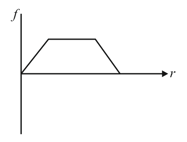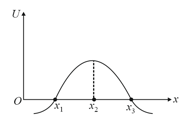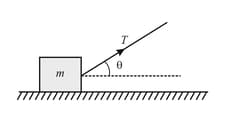Embibe Experts Solutions for Chapter: Work, Power & Energy, Exercise 1: Exercise 1
Embibe Experts Physics Solutions for Exercise - Embibe Experts Solutions for Chapter: Work, Power & Energy, Exercise 1: Exercise 1
Attempt the free practice questions on Chapter 6: Work, Power & Energy, Exercise 1: Exercise 1 with hints and solutions to strengthen your understanding. Practice Book for KVPY Aptitude Test - Stream SA Physics solutions are prepared by Experienced Embibe Experts.
Questions from Embibe Experts Solutions for Chapter: Work, Power & Energy, Exercise 1: Exercise 1 with Hints & Solutions
The force acting on the system is represented against distance as shown. The potential energy of the system will be best represented by. (At potential energy )

In the figure shown the potential energy of a particle is plotted against its position from origin. Then which of the following statement is correct. A particle at:

A block of mass slides along the horizontal track with kinetic friction A man pulls the block through a light rope which makes an angle with the horizontal as shown in the figure. The tension in the light rope is as shown. The block moves with constant speed . Power delivered by the man to the block is:

An engine pumps up of coal from mine deep in The pump is running with diesel and efficiency of the diesel engine is Then its power consumption will be
A self propelled vehicle of mass ,velocity , whose engine delivers constant power has an acceleration (assume that there is no friction). In order to increase its velocity from to the distance, it has to travel will be:
Water is flowing in a river at rate . The river is wide and has an average depth . The power from the river flow current is,
(density of water , Assume no velocity gradient with depth)
The kinetic energy of a particle moving along a circle of radius depends on the distance covered as where is a constant. Find the force acting on the particle as a function of .
The work done by the frictional force on a surface in drawing a circle of radius on the surface by a pencil of negligible mass with a normal pressing force (coefficient of friction ) is :
